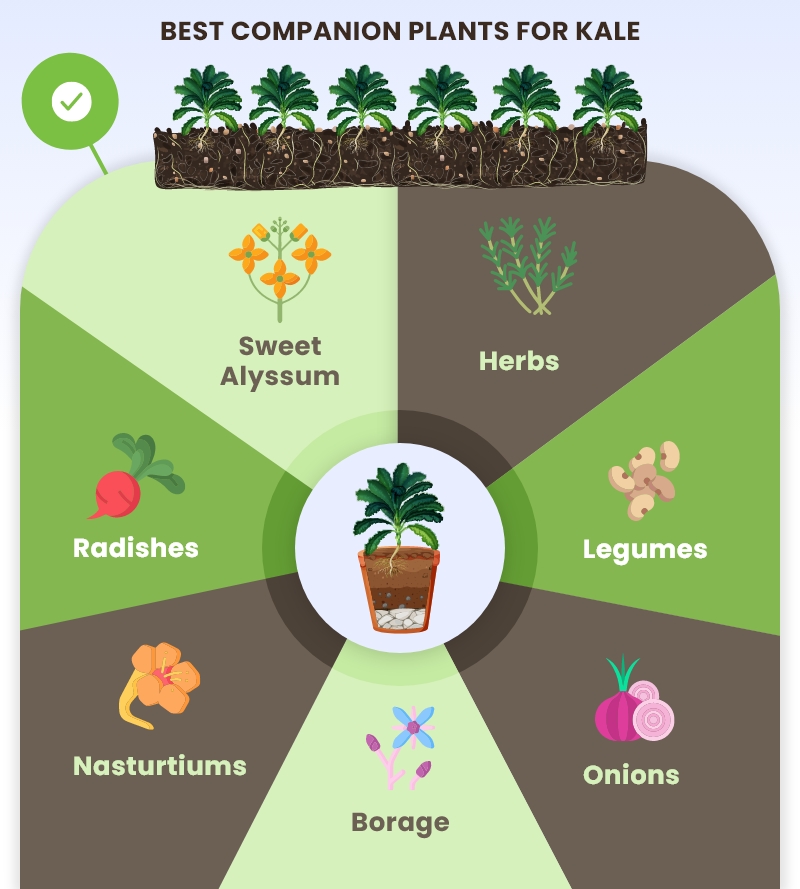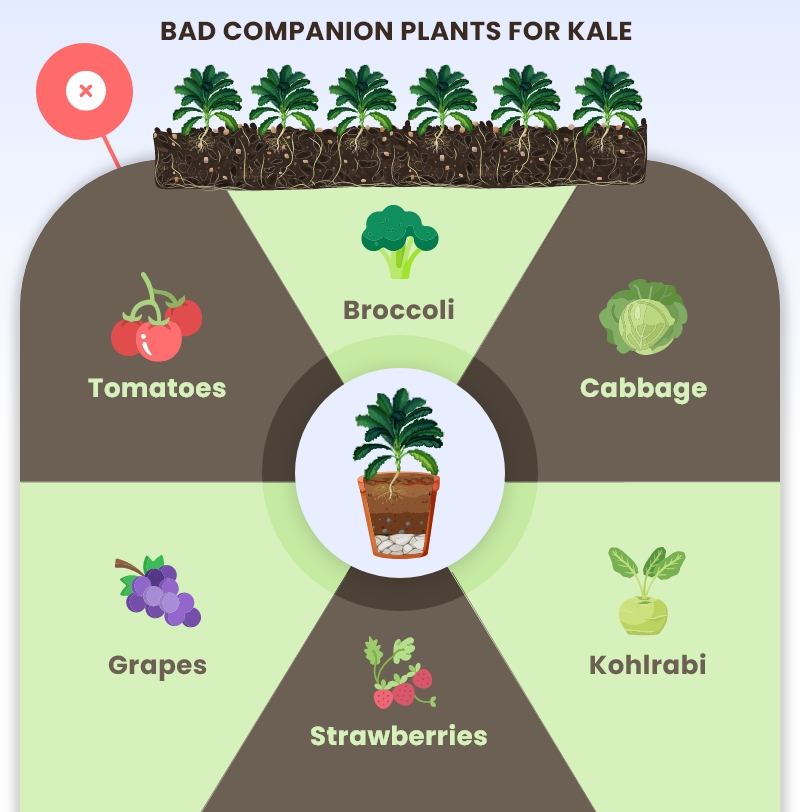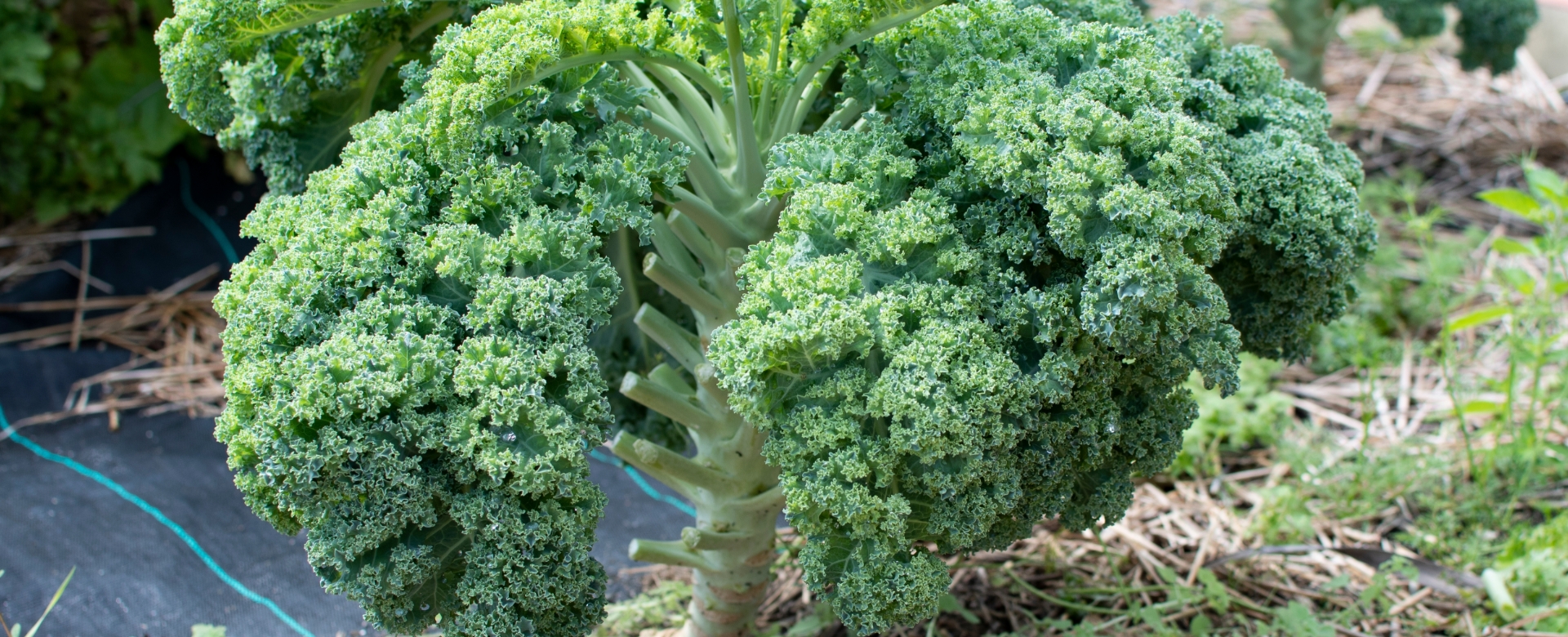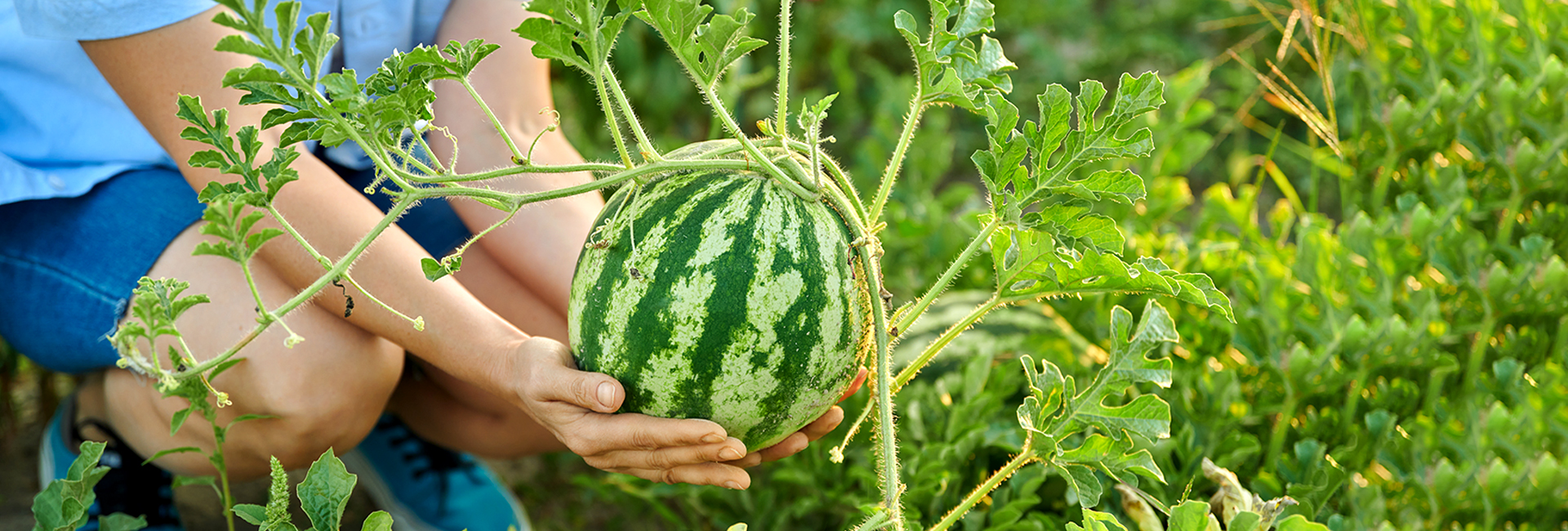Disappointed with your kale? Battling pesky cabbage moths or watching your plants struggle in the summer heat?
Kale companion planting can be your secret weapon for a flourishing harvest!
Almost every vegetable benefits when it’s planted near the perfect pair, and kale is no different. Specifically, when thinking about what to plant near kale, look for pairs that offer shade, discourage pests, or that share similar watering needs.
Ultimately, kale is a spring or fall crop. It loves cool weather. However, with the right companion, you can start them a little earlier in late summer. Keep reading for the best and worst companion plants for kale.
What Are Kale Companion Plants?
Companion planting is an age-old gardening technique, dating back thousands of years. And the idea is quite simple: Grow plants near each other that benefit each other.
For example, you might have heard of Three Sisters planting: Growing corn, squash, and beans together. The beans fix nitrogen in the soil and stabilize the corn; the squash shades the ground like a natural mulch, and the corn stalks provide a trellis for the beans.
Similarly, kale companion plants offer benefits that will improve your kale harvest. Certain companion plants for kale attract helpful insects like ladybugs that devour aphids, a common kale foe. Others deter pests with their strong scents, while some nitrogen-fixing companions enrich the soil, boosting your kale’s health.
Benefits of Companion Planting for Kale
Imagine a vibrant kale patch bursting with healthy leaves and thriving throughout the season!
Companion planting can help you achieve just that. Here’s what you can expect:
- Stronger kale: Beneficial insects keep pests at bay, while nitrogen-fixing companions promote strong growth.
- Increased yields: Happy, healthy kale plants translate to more delicious, vitamin-packed leaves for you to enjoy.
- Reduced pest pressure: Attract natural predators and deter unwanted visitors with strategic kale companion planting.
- Microclimate creation: Planting the right vegetables near kale can help you create the perfect conditions for growing (including a little afternoon shade on the hottest days).
Top Companion Plants for Kale

So, what should you plant next to kale? These herbs and veggies make the perfect companion pairs, offering a range of benefits. Our favorite kale companion plants include:
1. Herbs
Herbs are a popular companion plant for just about any vegetable, and kale is no different. Pair kale with aromatic herbs like rosemary, thyme, and sage. Here’s why:
Many herbs have strong scents that repel common kale pests like aphids, flea beetles, and cabbage loopers. Cilantro, dill, and chamomile are all good examples of this. They can also attract beneficial insects like ladybugs and hoverflies that prey on these pests, creating a natural pest control system in your garden.
Plus, some herbs, like thyme and oregano, are low-growing and can be planted in between kale plants. This helps to maximize space in your garden.
2. Legumes
Bush beans, pole beans and peas make good kale growing pairs. This is because they’re nitrogen fixer. That means the plants gather nitrogen from the air and make it available in the soil.
This naturally fertilizes surrounding plants like kale, adding increasing the available nitrogen, a favorite kale food source.
Pro tip. In mid-to-late summer, plant green beans 2-3 weeks before kale plants, on the west side. As the pole beans climb, they’ll create a bit of afternoon shade for the kale (especially useful on hot late-summer days).
3. Onions
Onions – both bulb and bunching onions – are great roommates for kale. That’s because they have a pungent odor, which research suggests is effective at deter common kale pests like cabbage loopers and cabbageworm.
For spring planting, choose bulb onions. You’ll plant them around the same time in the spring. And for your fall crop of kale, choose bunching onions (planted in late summer), which will deter pests in the fall.
4. Borage
Borage makes a great companion pair for attracting pollinators. That’s why it’s useful companion plant for peppers
However, for kale, which you’ll harvest before it bolts (flowers), pollination isn’t a big concern. Instead, as a kale companion plant, borage attracts helpful predators, like ladybugs. Ladybugs can help deter again aphids, which can invest and devour kale.
One tip. Grow your borage in pots. You can move it closer to your kale plants in early summer and fall, as your kale crop matures.
5. Nasturtiums
If you’ve struggled with aphid infestations in the past, consider companion planting with nasturtiums. This vibrant flower acts as a trap crop, drawing aphids away from your kale.
Nasturtiums are an excellent companion plant for any vegetable that struggles with aphids, like tomatoes Plus, they can add a bit of visual interest and color to your garden.
6. Radishes
This is a companion plant for kale that saves space! Consider adding radishes underneath your kale crop. A tightly spaced planting will a) provide some needed shade for the radishes and b) break up the soil for kale (which is shallow rooted).
Radishes, as a kale companion plant, can also act as a trap crop for flea beetles, which can devour kale leaves in early spring and summer. Another benefit: Both radishes and kale thrive in spring and autumn.
7. Sweet Alyssum
Commonly used for borders in flower garden, alyssum makes a perfect kale companion plant. Here are a few reasons why:
- Stays low to the ground, helping to improve soil moisture for kale. (Especially useful if your planting location gets dry heat in the afternoon.)
- Suppresses weeds.
- Doesn’t require much in terms of nutrients, so it won’t compete for kale for resources.
- Can help to attract hoverflies and ladybugs, which eat aphids.
Bad Companion Plants for Kale

OK, so what should you not plant near kale? Generally, kale is an adaptable vegetable, but there are some bad companion plants that compete for resources, attract pests, or have different watering needs.
Some of the worst companion plants for kale include:
- Brassicas (broccoli, cabbage, kohlrabi) – Kale is a brassica (from the cabbage family), and it can thrive near other brassicas. However, these plants all attract similar pests and diseases. Therefore, planting them together can increase pest and disease pressure.
- Strawberries: Some say that strawberries grow well next to kale. But here’s the issue: Strawberries are very effective ground covers, and as a result, they create conditions that slugs love. Slugs, of course, love leafy greens and will happily eat up your baby kale.
- Grapes: If you’re growing grapes in your garden, don’t plant kale nearby. Grapes need tons of nutrients, and as a result they can deplete the soil and compete with kale for resources.
- Tomatoes: You can plant tomatoes and kale near each other. But the issue is their watering needs. Tomatoes tolerate a little less water, and in some cases, can thrive when you limit the amount of water they receive. Kale, though, needs consistent water. If you’re using a drip hose or sprinkler, one will suffer.
Kale Companion Planting: Key Strategies for Success
Follow these tips to maximize the benefits of your companion planting with kale:
- Successive Planting: Kale thrives in cooler weather. So, when you set your kale plants out in early spring, you can start them near peas. When the warmer weather comes, consider interplanting beans for a continual supply of nitrogen.
- Space for Success: Don’t crowd your kale! Research the mature size of both your kale plants and their companion choices. Ensure adequate spacing to prevent overcrowding, which can hinder growth and airflow, increasing the risk of disease.
- Vertical Advantage: Consider utilizing vertical space for some companion plants. Vining herbs like rosemary or climbing beans can be trained to grow on trellises, maximizing space and allowing more sunlight to reach your kale or providing a hit of afternoon shade.
- Flower Power: Intersperse your kale with flowering companions like dill, borage, or nasturtiums. Their blooms attract beneficial insects like ladybugs and hoverflies, natural predators that keep your kale pest-free.
- Mulch Magic: Apply a layer of organic mulch around your kale plants. Mulch helps retain moisture, suppress weeds, and create a cooler soil environment, all of which contribute to a thriving kale patch.

Common Mistakes to Avoid
Want a thriving kale crop? Don’t make these mistakes:
- Ignoring Plant Needs: Not all plants play nice together! Research companion plant requirements before planting. Avoid placing kale next to plants with similar pest and disease vulnerabilities.
- Planting Mint in Close Proximity: Mint is a notorious spreader. Its aggressive growth can easily smother delicate kale plants. Opt for alternative companion herbs like rosemary or dill, or plant mint in a separate container.
- Ignoring Seasonal Factors: Not all companion plants are created equal for every season. While lettuce provides welcome shade for kale in the summer heat, it might struggle to survive alongside your kale in the colder months. Choose companion plants suited for the same growing season as your kale.
- Focusing Solely on Pest Control: Companion planting offers numerous benefits beyond pest control. While attracting beneficial insects is important, consider the complete picture. Choose companions that provide shade, fix nitrogen in the soil, or add beauty to your garden alongside their pest-deterring properties.
Wrapping Up
Companion planting can transform your kale patch from a struggle into a flourishing success story. By strategically incorporating beneficial companions, you can enjoy healthier kale, increased yields, and a vibrant garden ecosystem teeming with life. So, ditch the frustration and embrace the power of partnership in your kale garden!
Visit Homegrown Outlet for all your organic gardening needs. Stop by a location in Upstate New York today.




